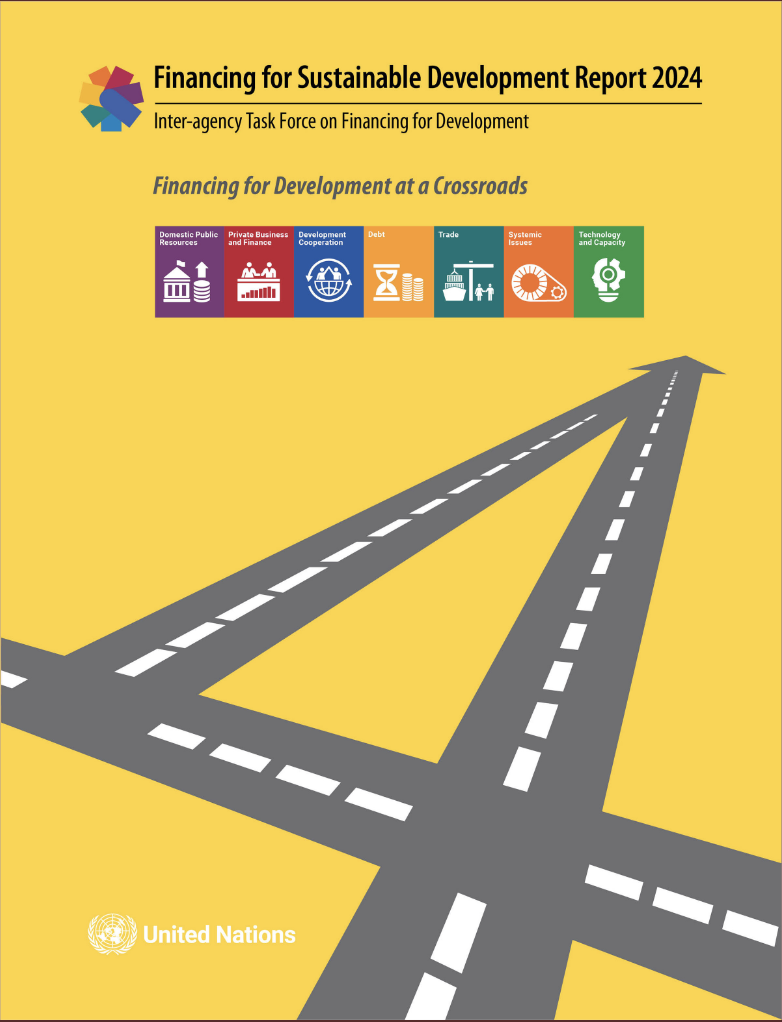Only 15% of SDGs
are on track
We need to act now
We are mid-way to 2030 and only 15 percent of the Sustainable Development Goals (SDGs) are on track. Current rates of investment fall far short of what is required to meet the goals, yet developing countries are unable to access sufficient finance on affordable terms. Many are gripped by ongoing economic turmoil. The situation is aggravated by a global financial system that is short-term oriented, crisis-prone, and which further exacerbates inequalities.
Let’s transform the world; let’s bring more justice and equality to our international institutions. Let’s rescue the SDGs and fight for the better future every person deserves.

What is the SDG Stimulus?
The SDG Stimulus aims to offset challenging market conditions faced by developing countries and accelerate progress towards the SDGs. The SDG Stimulus puts forward three areas for immediate action:

Action 1
Tackle the high cost of debt and rising risks of debt distress
Sovereign debt has reached alarming levels, and governments are struggling to balance debt service with essential spending needs. The SDG Stimulus outlines a series of actions to support affected countries and prevent new debt crises from occurring. These include developing an improved multilateral debt initiative to assist countries in distress and encouraging the adoption of new debt instruments, such as state contingent debt clauses and majority voting provisions.

Action 2
Scale up affordable and long-term financing for development
Achieving the SDGs requires a substantial increase in sustainable investment in developing countries. The SDG Stimulus recognizes the critical role of multilateral development banks (MDBs) in mobilizing affordable development finance. Proposed strategies include both increasing MDB capital bases and more efficiently using their balance sheets to boost lending by $500 billion annually. Additionally, the plan urges concessional finance to be allocated to all vulnerable countries.

Action 3
Expand contingency financing to countries in need
Developing countries require more and better financial support in times of crises. The SDG Stimulus proposes several measures to assist developing countries, including the reallocation of Special Drawing Rights to countries in need, new quick-disbursing financing instruments, and permanently increasing access limits to emergency lending windows.

Chair of the SDG Stimulus Group
The UN Secretary-General provides high-level political leadership to facilitate decision-making and global consensus on financing for development and the SDG Stimulus.
The SDG Stimulus Leaders Group was established by the UN Secretary-General to offer pathways to address many of the constraints that stand in the way of implementation and can provide bold, inspired leadership to motivate change.
Read more in the Press Release.
StatementsBriefs and reports
Read the latest report on the SDG Stimulus
and financing for development.
SDG Stimulus Leaders Group
The SDG Stimulus Leaders Group is convened by the UN Secretary-General to advocate at the highest level for equipping developing countries with the financial resources they require to invest in the SDGs. The membership of the Leaders Group includes Heads of State and Government of Barbados, Brazil, Canada (co-chair), France, India, Italy, Jamaica (co-chair), Kenya, South Africa, and Spain.
Get involved
The success of the SDGs depends on collective action and political will. We call on governments, international organizations, the private sector, civil society, and individuals to join us in implementing these crucial changes in financing for development. By working together, we can make the ambition of the SDGs a reality and achieve a sustainable, equitable future for all.






